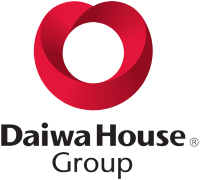Анализ компании British Land Company Plc
1. Резюме
Плюсы
- Цена (4.56 $) меньше справедливой цены (5.07 $)
- Доходность акции за последний год (-3.39%) выше чем средняя по сектору (-16.18%).
Минусы
- Дивиденды (5.6%) меньше среднего по сектору (10.04%).
- Текущий уровень задолженности 29.33% увеличился за 5 лет c 19.17%.
- Текущая эффективность компании (ROE=-0.0165%) ниже чем в среднем по сектору (ROE=2.09%)
Похожие компании
2. Цена акции и эффективность
2.1. Цена акции
2.2. Новости
19 октября 22:01 Без времени на раскачку
2.3. Рыночная эффективность
| British Land Company Plc | Real Estate | Индекс | |
|---|---|---|---|
| 7 дней | -1.1% | -1.2% | -2.6% |
| 90 дней | -4.6% | -0.9% | -0.6% |
| 1 год | -3.4% | -16.2% | 16.9% |
BTLCY vs Сектор: British Land Company Plc превзошел сектор "Real Estate" на 12.79% за последний год.
BTLCY vs Рынок: British Land Company Plc значительно отстал от рынка на -20.33% за последний год.
Стабильная цена: BTLCY не является значительно более волатильным чем остальная часть рынка на "OTC" за последние 3 месяца, типичные отклонения в пределах +/- 5% в неделю.
Длительный промежуток: BTLCY с недельной волатильностью в -0.0652% за прошедший год.
3. Резюме по отчету
4. Фундаменальный анализ
4.1. Цена акции и прогноз цены
Ниже справедливой цены: Текущая цена (4.56 $) ниже справедливой (5.07 $).
Цена не значительно ниже справедливой: Текущая цена (4.56 $) немного ниже справедливой на 11.2%.
4.2. P/E
P/E vs Сектор: Показатель P/E компании (6.67) ниже чем у сектора в целом (31.92).
P/E vs Рынок: Показатель P/E компании (6.67) ниже чем у рынка в целом (46.95).
4.2.1 P/E Похожие компании
4.3. P/BV
P/BV vs Сектор: Показатель P/BV компании (0.6843) ниже чем у сектора в целом (1.14).
P/BV vs Рынок: Показатель P/BV компании (0.6843) выше чем у рынка в целом (-8.98).
4.3.1 P/BV Похожие компании
4.4. P/S
P/S vs Сектор: Показатель P/S компании (6.32) выше чем у сектора в целом (5.79).
P/S vs Рынок: Показатель P/S компании (6.32) выше чем у рынка в целом (4.88).
4.4.1 P/S Похожие компании
4.5. EV/Ebitda
EV/Ebitda vs Сектор: Показатель EV/Ebitda компании (48.25) ниже чем у сектора в целом (117.76).
EV/Ebitda vs Рынок: Показатель EV/Ebitda компании (48.25) выше чем у рынка в целом (25.28).
5. Доходность
5.1. Доходность и выручка
5.2. Доход на акцию - EPS
5.3. Прошлая доходность Net Income
Тренд доходности: Отрицательный и за последние 5 лет упал на -19.98%.
Ускорение доходности: Доходность за последний год (0%) превышает среднюю доходность за 5 лет (-19.98%).
Доходность vs Сектор: Доходность за последний год (0%) превышает доходность по сектору (-55.97%).
5.4. ROE
ROE vs Сектор: Показатель ROE компании (-0.0165%) ниже чем у сектора в целом (2.09%).
ROE vs Рынок: Показатель ROE компании (-0.0165%) выже чем у рынка в целом (-8.23%).
5.5. ROA
ROA vs Сектор: Показатель ROA компании (-0.011%) ниже чем у сектора в целом (1.12%).
ROA vs Рынок: Показатель ROA компании (-0.011%) ниже чем у рынка в целом (4.85%).
5.6. ROIC
ROIC vs Сектор: Показатель ROIC компании (-11.28%) ниже чем у сектора в целом (4.91%).
ROIC vs Рынок: Показатель ROIC компании (-11.28%) ниже чем у рынка в целом (11.03%).
7. Дивиденды
7.1. Дивидендная доходность vs Рынок
Низкая див доходность: Дивидендная доходность компании 5.6% ниже средней по сектору '10.04%.
7.2. Стабильность и увеличение выплат
Стабильность дивидендов: Дивидендная доходность компании 5.6% стабильно платится на протяжении последних 7 лет, DSI=0.86.
Слабый рост дивидендов: Дивидендный доход компании 5.6% слабо или не растет за последние 5 лет. Рост на протяжении только 1 год.
7.3. Процент выплат
Покрытие дивидендами: Текущие выплаты из доходов (-17.05%) находятся на не комфортном уровне.
Оплатите подписку
Больше функциональности и данных для анализа компаний и портфеля доступно по подписке




